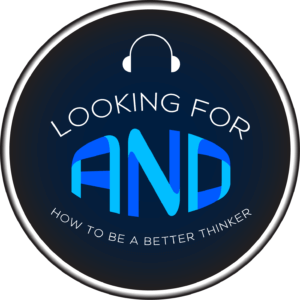 “Things like that don’t trick me,” commented one person who participated in a research study in 2000. Another said, “I’m pretty good at knowing when I’m full.” These people were part of a study where a random group of moviegoers were given free popcorn in a medium or large-sized bucket where the goal was to test if the portion size influenced how much people ate.
“Things like that don’t trick me,” commented one person who participated in a research study in 2000. Another said, “I’m pretty good at knowing when I’m full.” These people were part of a study where a random group of moviegoers were given free popcorn in a medium or large-sized bucket where the goal was to test if the portion size influenced how much people ate.
The results: People with the larger buckets ate a whopping 53% more than their medium-sized counterparts. (By the way, the popcorn was ‘engineered’ to taste pretty bad. It was five days old and “squeaked” when it was eaten.) Other popcorn eating studies have been run, but the results are always the same. If you get a big container, you eat more, a lot more.
Imagine, for a second, that you are a public health expert and you are given the results of this study, except there is no mention of the bucket sizes. You only know that some people ate a lot and some ate less. You might say, “We’ve got to motivate people to eat less. Let’s create a marketing campaign that promotes healthier snacks and show the hazards of eating too much!” Not so fast…
Motivating people to completely changing their movie eating habits is really hard. Changing the size of the buckets…well, that’s pretty easy. Chip and Dan Heath, authors of Switch – How to Change Things When Change is Hard use this story to illustrate that making a change in a person’s behavior or thinking patterns is not always straightforward. Sometimes, the ‘path’ (eg; the environment) needs to be the focus when you need to facilitate change. The authors did a wonderful job of creating a simple, three-part framework for successful change that includes 1) Direct the rider, 2) Motivate the elephant, and 3) Shape the path. All three elements of the framework need to be addressed for any change to be successful.
Change is Hard use this story to illustrate that making a change in a person’s behavior or thinking patterns is not always straightforward. Sometimes, the ‘path’ (eg; the environment) needs to be the focus when you need to facilitate change. The authors did a wonderful job of creating a simple, three-part framework for successful change that includes 1) Direct the rider, 2) Motivate the elephant, and 3) Shape the path. All three elements of the framework need to be addressed for any change to be successful.
Direct the Rider
The authors use Jonathan Haidt’s analogy from the super book, The Happiness Hypothesis, where the Rider is the rational side of our brains and the Elephant is the emotional side. The problem is that the Rider is small in relation to the Elephant and tires quickly. When the Elephant disagrees, the Rider loses. For instance, we all know what happens when we go shopping when we’re really hungry, or we’re a little tired when it’s time to go exercise. The Elephant usually wins in the end (eg; buying too much at the grocery store or taking a nap in place of exercise) when we try to create change only through willpower. To get the Rider pointed in the right direction, it is important to identify bright spots (eg; times when positive changed stuck) and give specific goals that point to a clear destination.
Motivate the Elephant
Remember, the Elephant is our emotional side. It is immature, in a sense, and focused on the short-term. The Elephant wants to eat the cookies because they taste good and take a nap because it’s tired. Motivating this powerful beast requires us to connect on an emotional level. Two concepts can be explored here. First, consider shrinking the change. If you want to meet your yearly sales target (a big goal), break it down into smaller parts. That is, get ‘quick wins.’ For instance, you might want to get one new appointment, every day, so that the Elephant doesn’t lose interest because the yearly goal is so far off and almost abstract. The second option is to engage the growth mindset. Recognize that early failure is a necessary element of success. Set stretch goals. Make it safe to take risks. In short, get excited about growth and the destination.
Shape the Path
Sometimes, they key to a particular change is nothing more than a tweak of the environment where it’s easier to engage the ‘right’ behaviors and hard to use the ‘wrong’ behaviors. Think Amazon’s 1-Click shopping. If you want to eat less, use smaller plates. Another strategy is to create a habit. Several studies prove that you are much more likely to do the admin work that you hate if you just put a 30-minute meeting on your calendar entitle “Admin work.” Do you want less chatter at your team meetings? Shorten them to 30 minutes and remove the chairs from the room. It’s amazing how productive a meeting can be when no one can sit down.
In the end, Switch doesn’t make change any easier. But, it does provide a framework for positive, meaningful change whether you are a CEO, a manager, or just someone trying to improve your health or productivity. Just remember, get the smaller bucket of popcorn the next time you go to the movies.


